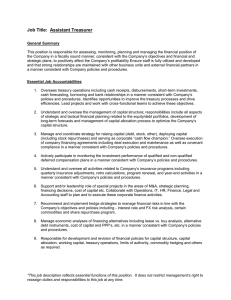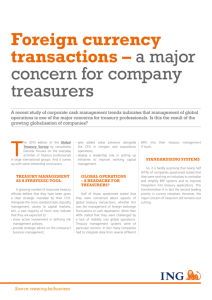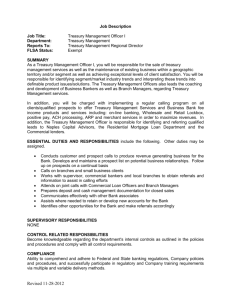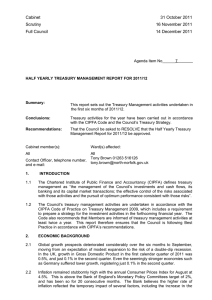Treasury and Cash Management
advertisement
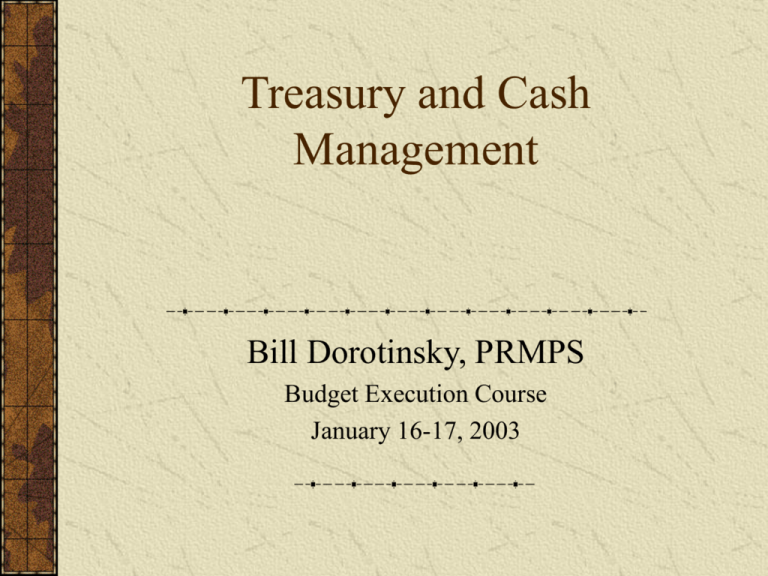
Treasury and Cash Management Bill Dorotinsky, PRMPS Budget Execution Course January 16-17, 2003 Core Treasury Functions Cash management (flow and stock) Financial asset management Debt management, servicing; guarantee management Accounting (policy, chart of accounts, general ledger) and reporting Revenue collection, forecasting Account management (payment, collection, reconciliation) Central Bank relations Varied organizational options Treasury as an organization MoF – core treasury plus formulation Core treasury only Treasury system – system for managing government transactions Centralized Distributed – treasury, commercial banks Automated, mixed, manual Widely differing authority Complete authority to reduce below budget, vire No authority to reduce, vire without Government or legislative approval Cash management Objectives: Assure fund availability for meeting government obligations (liquidity) Cash conservation Minimize borrowing, borrowing cost Maximize returns from idle cash Risk management Tools: Treasury consolidated fund (single account) Financial plans Warrants (allowable draws on TCF) Invoice payment/cash rationing Debt issuance Supplemental budgets Treasury Consolidated Fund (treasury single account) Single account or accounts under treasury management – consolidation of cash The more accounts, the more difficult to manage, report Payment arrangements will vary: Centralized: direct transaction from TCF Deconcentrated: payment by spending agency from TCF Decentralized: payment by spending agency from imprest account Financial plans Important link between budget, agency programs and activity, cash flow Links commitments and cash Used for cash flow forecasting when combined with revenue forecast Allows planned, orderly debt issuance Usually monthly Periodic variance analysis to plan, budget Cash rationing (misnomer cash budgeting) Last resort liquidity management Disruptive to programs, vendors High corruption potential Need transparent ex ante rules Public procedure Likely to undermine budget priorities Debt management Debts and liabilities need to be recognized and inventoried Debt can include: Bills, notes and bonds Budgetary arrears Accounts payable Unfunded pension liabilities Accrued but unpaid employee benefits, to name a few Debt can also include certain obligations of sub-national governments Contingent liabilities Government acts as a guarantor of debt repayment in the event that the borrower cannot make repayment, or of payment under certain conditions Loan, pension benefit, bank deposit, agricultural price Contingent debt must be managed with the same detail as direct debt. As with direct debt these contingent debts must be inventoried and monitored in a central location Active identification, monitoring, management of risk important

